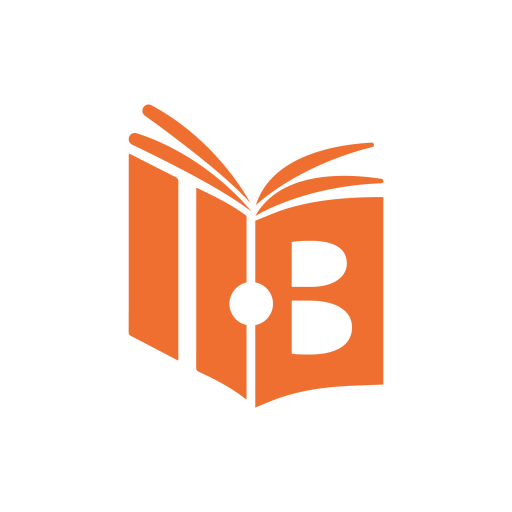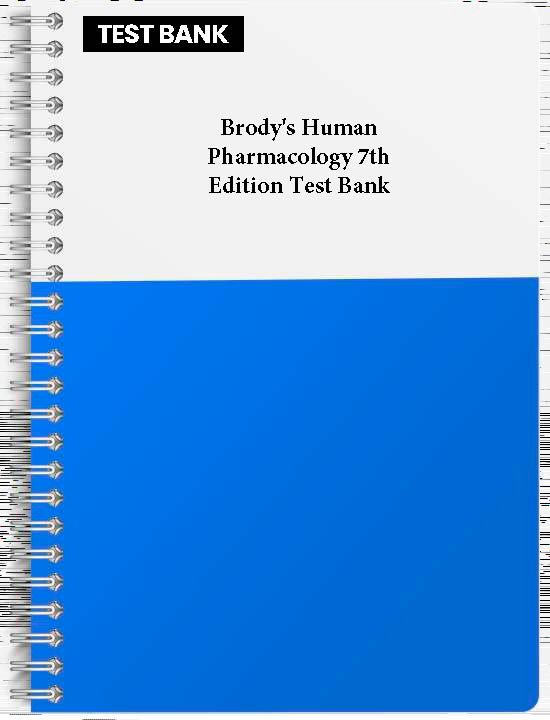Description
Katzung’s Basic and Clinical Pharmacology 16th Edition Test Bank is an essential resource for students and healthcare professionals seeking to master pharmacology concepts and apply them in clinical practice. Here’s an overview of the main topics covered in the test bank:
- General Principles of Pharmacology: Questions cover pharmacokinetics (absorption, distribution, metabolism, and excretion of drugs), pharmacodynamics (drug-receptor interactions, dose-response relationships), and foundational concepts such as drug potency, efficacy, and therapeutic index.
- Autonomic Pharmacology: Focuses on drugs affecting the autonomic nervous system, including sympathomimetics, parasympathomimetics, and agents that influence sympathetic and parasympathetic pathways. Questions test understanding of drug effects on receptors, clinical indications, and adverse effects.
- Cardiovascular and Renal Pharmacology: Covers drugs used for cardiovascular conditions such as antihypertensives, diuretics, antiarrhythmics, and lipid-lowering agents. Questions test knowledge of drug mechanisms, therapeutic uses, and side effect profiles for managing hypertension, heart failure, arrhythmias, and dyslipidemia.
- Central Nervous System Drugs: This section includes drugs for conditions such as anxiety, depression, psychosis, epilepsy, and neurodegenerative diseases. Questions cover mechanisms of action, side effects, drug interactions, and the clinical application of CNS drugs like antidepressants, antipsychotics, and sedative-hypnotics.
- Chemotherapeutic Agents: Questions on antimicrobial, antifungal, antiviral, and antiparasitic drugs emphasize mechanisms of action, resistance, spectrum of activity, and indications for use. It also includes questions on anticancer drugs, covering drug classes, mechanisms, side effects, and principles of combination chemotherapy.
- Endocrine Pharmacology: Focuses on drugs related to endocrine function, including medications for diabetes, thyroid disorders, adrenal diseases, and reproductive health. Questions cover hormone replacement therapy, insulin and oral hypoglycemics, and drugs affecting thyroid and adrenal function.
- Anti-Inflammatory and Immunopharmacology: Questions cover nonsteroidal anti-inflammatory drugs (NSAIDs), corticosteroids, immunosuppressants, and drugs used to manage autoimmune diseases and allergies. This section emphasizes drug mechanisms, clinical uses, and side effect profiles.
Chapter 1: Introduction: The Nature of Drugs & Drug Development & Regulation
Chapter 2: Drug Receptors & Pharmacodynamics
Chapter 3: Pharmacokinetics & Pharmacodynamics: Rational Dosing & the Time Course of Drug Action
Chapter 4: Drug Biotransformation
Chapter 5: Pharmacogenomics
Chapter 6: Introduction to Autonomic Pharmacology
Chapter 7: Cholinoceptor-Activating & Cholinesterase-Inhibiting Drugs
Chapter 8: Cholinoceptor-Blocking Drugs
Chapter 9: Adrenoceptor Agonists & Sympathomimetic Drugs
Chapter 10: Adrenoceptor Antagonist Drugs
SECTION III: CARDIOVASCULAR-RENAL DRUGS
Chapter 11: Antihypertensive Agents
Chapter 12: Vasodilators & the Treatment of Angina Pectoris & Coronary Syndromes
Chapter 13: Drugs Used in Heart Failure
Chapter 14: Agents Used in Cardiac Arrhythmias
Chapter 15: Diuretic Agents
SECTION IV: DRUGS WITH IMPORTANT ACTIONS ON SMOOTH MUSCLE
Chapter 16: Histamine, Serotonin, Anti-Obesity Drugs, & the Ergot Alkaloids
Chapter 17: Vasoactive Peptides
Chapter 18: The Eicosanoids: Prostaglandins, Thromboxanes, Leukotrienes, & Related Compounds
Chapter 19: Nitric Oxide
Chapter 20: Drugs Used in Asthma & Chronic Obstructive Pulmonary Disease
SECTION V: DRUGS THAT ACT IN THE CENTRAL NERVOUS SYSTEM
Chapter 21: Introduction to the Pharmacology of CNS Drugs
Chapter 22: Sedative-Hypnotic Drugs
Chapter 23: The Alcohols
Chapter 24: Antiseizure Medications
Chapter 25: General Anesthetics
Chapter 26: Local Anesthetics
Chapter 27: Skeletal Muscle Relaxants
Chapter 28: Pharmacologic Management of Parkinsonism & Other Movement Disorders
Chapter 29: Antipsychotic Agents & Lithium
Chapter 30: Antidepressant Agents
Chapter 31: Opioid Agonists & Antagonists
Chapter 32: Drugs of Abuse
SECTION VI: DRUGS USED TO TREAT DISEASES OF THE BLOOD, INFLAMMATION, & GOUT
Chapter 33: Agents Used in Cytopenias; Hematopoietic Growth Factors
Chapter 34: Drugs Used in Disorders of Coagulation
Chapter 35: Agents Used in Dyslipidemia
Chapter 36: Nonsteroidal Anti-Inflammatory Drugs, Disease-Modifying Antirheumatic Drugs, Nonopioid Analgesics, & Drugs Used in Gout
SECTION VII: ENDOCRINE DRUGS
Chapter 37: Hypothalamic & Pituitary Hormones
Chapter 38: Thyroid & Antithyroid Drugs
Chapter 39: Adrenocorticosteroids & Adrenocortical Antagonists
Chapter 40: The Gonadal Hormones & Inhibitors
Chapter 41: Pancreatic Hormones & Glucose-Lowering Drugs
Chapter 42: Agents That Affect Bone Mineral Homeostasis
Chapter 43: Beta-Lactam & Other Cell Wall- & Membrane-Active Antibiotics
Chapter 44: Tetracyclines, Macrolides, Clindamycin, Chloramphenicol, Streptogramins, Oxazolidinones, & Pleuromutilins
Chapter 45: Aminoglycosides & Spectinomycin
Chapter 46: Sulfonamides, Trimethoprim, & Quinolones
Chapter 47: Antimycobacterial Drugs
Chapter 48: Antifungal Agents
Chapter 49: Antiviral Agents
Chapter 50: Miscellaneous Antimicrobial Agents; Disinfectants, Antiseptics, & Sterilants
Chapter 51: Clinical Use of Antimicrobial Agents
Chapter 52: Antiprotozoal Drugs
Chapter 53: Pharmacology of the Antihelminthic Drugs
Chapter 54: Cancer Chemotherapy
Chapter 55: Immunopharmacology
Chapter 56: Introduction to Toxicology: Occupational & Environmental
Chapter 57: Heavy Metal Intoxication & Chelators
Chapter 58: Management of the Poisoned Patient
Chapter 59: Special Aspects of Perinatal & Pediatric Pharmacology
Chapter 60: Special Aspects of Geriatric Pharmacology
Chapter 61: Dermatologic Pharmacology
Chapter 62: Drugs Used in the Treatment of Gastrointestinal Diseases
Chapter 63: Cannabinoid Drugs
Chapter 64: Therapeutic & Toxic Potential of Over-the-Counter Agents
Chapter 65: Dietary Supplements & Herbal Medications
Chapter 66: Rational Prescribing & Prescription Writing
Chapter 67: Important Drug Interactions & Their Mechanisms










Reviews
There are no reviews yet.